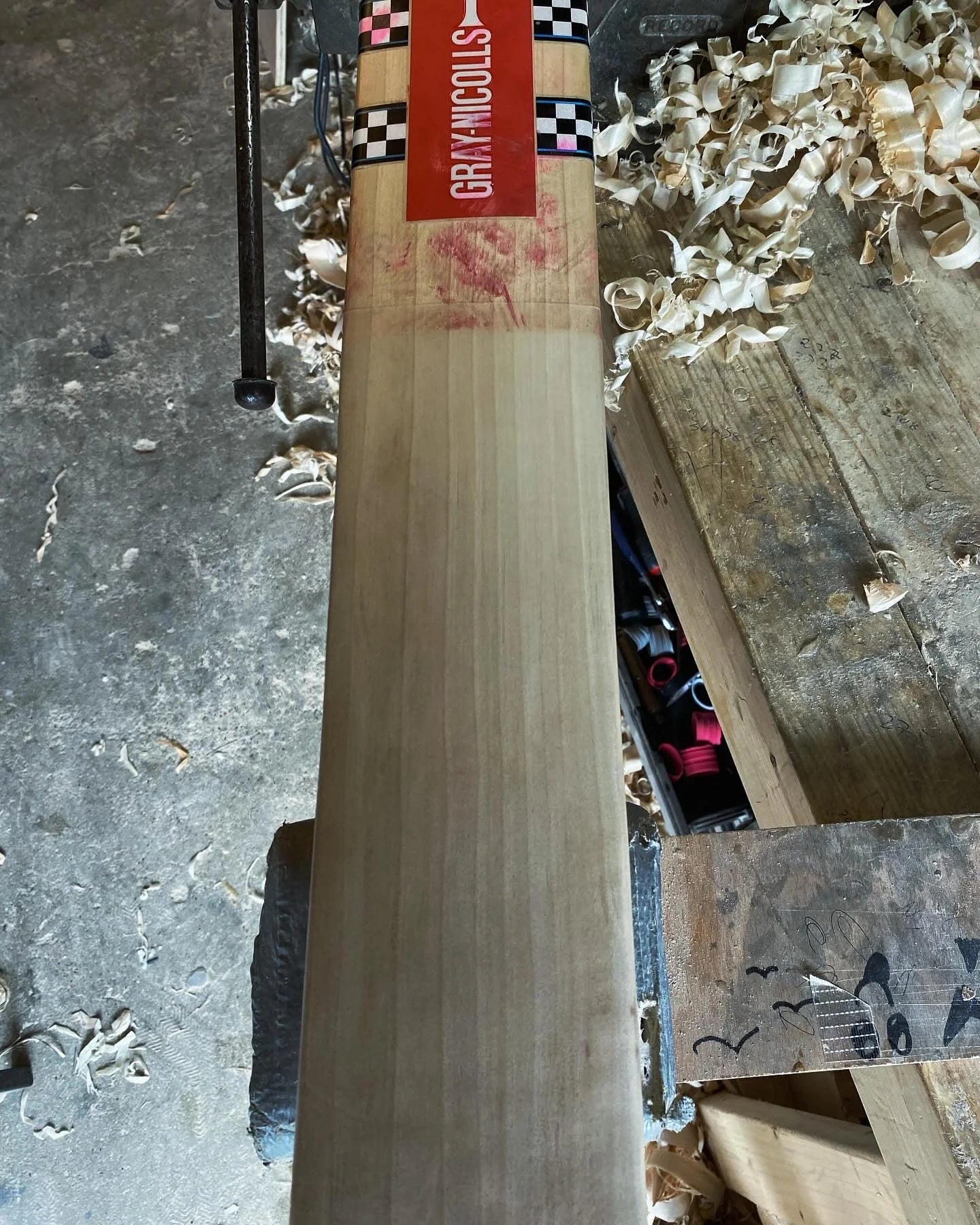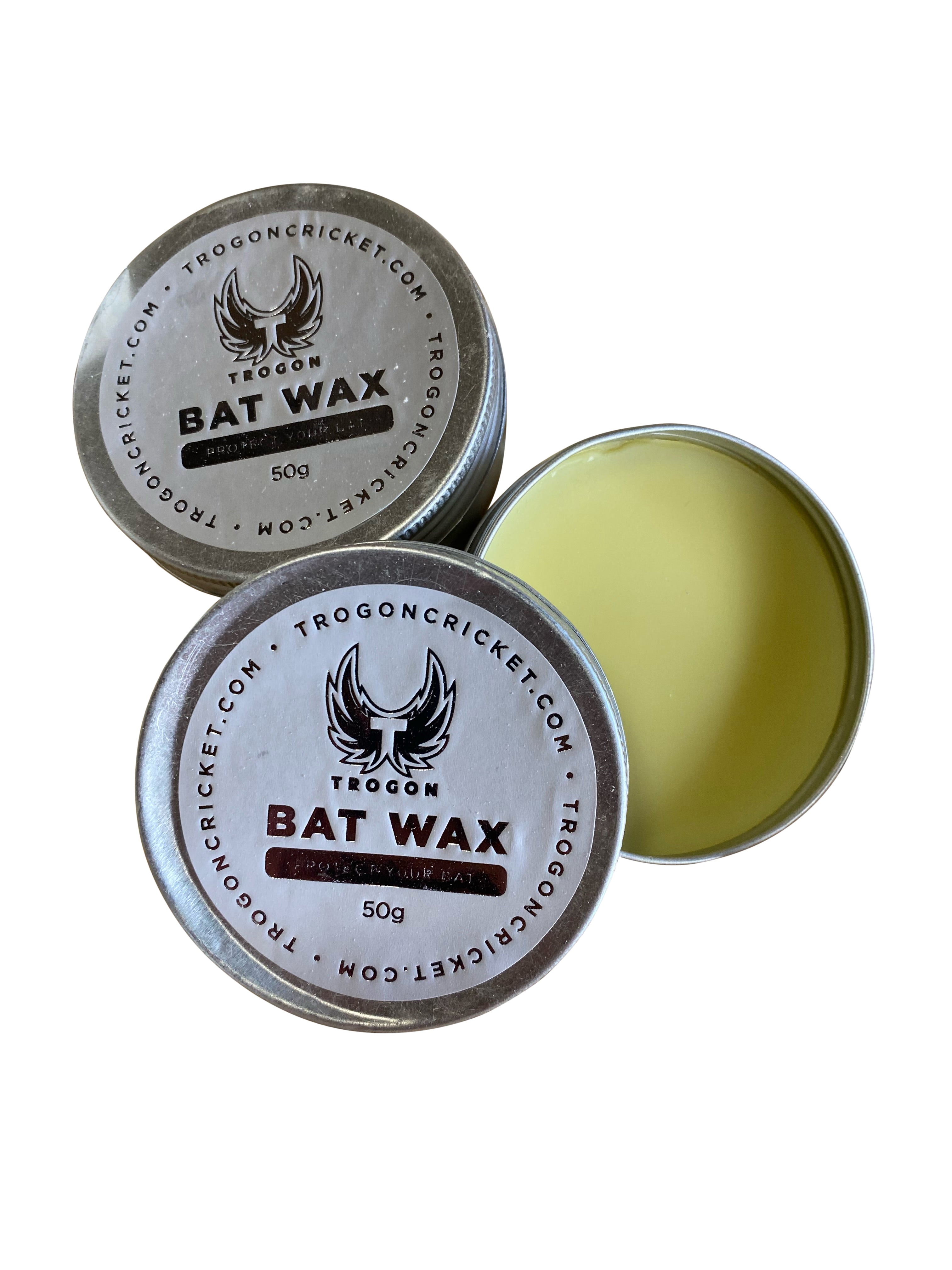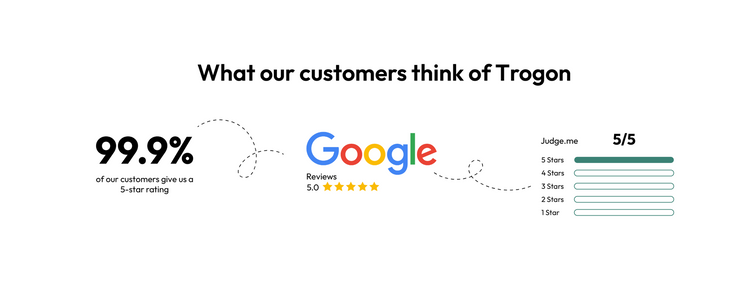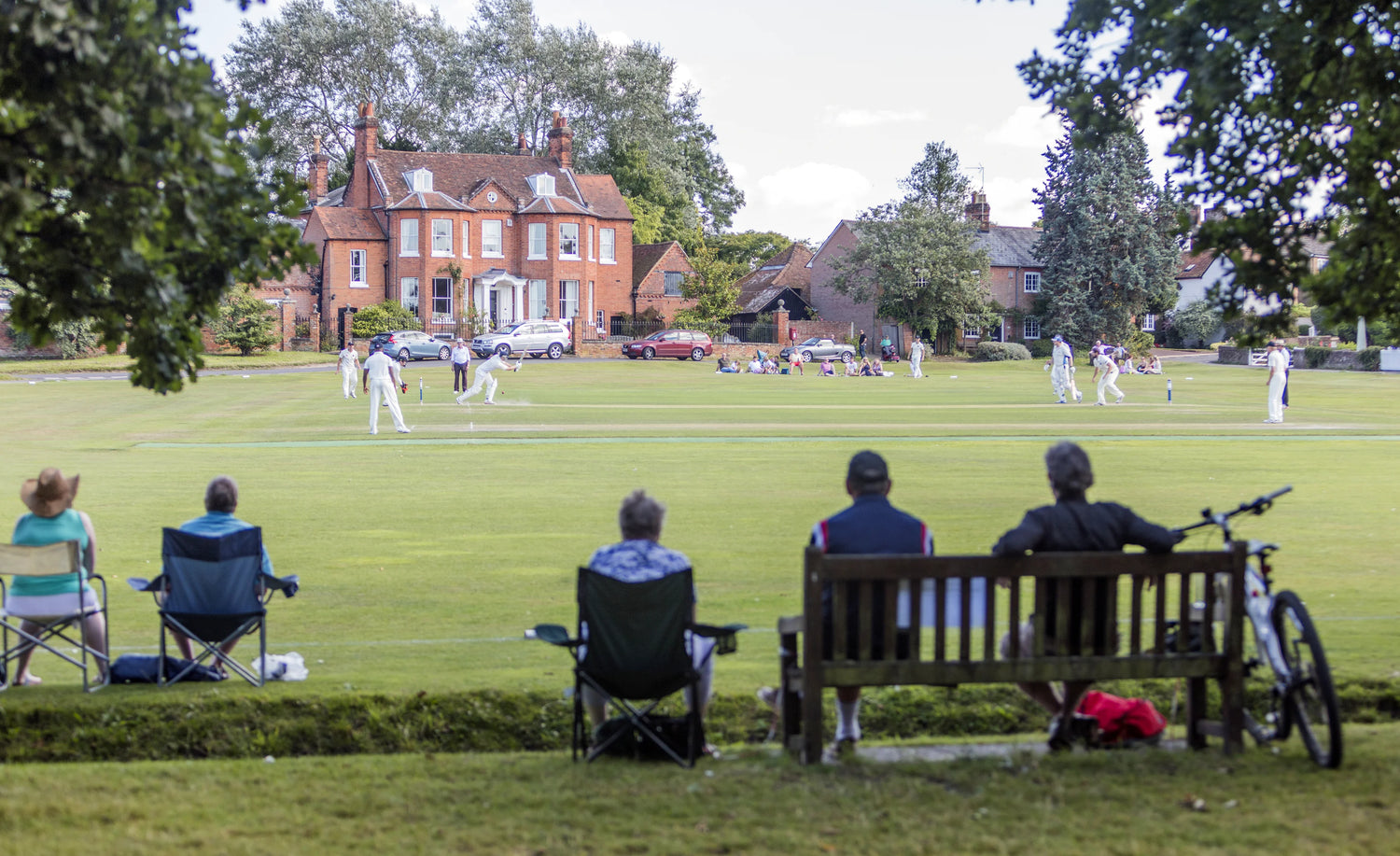Whether you are a beginner learning the ropes or a seasoned player honing your skills, choosing the right cricket bat is essential.
In this comprehensive guide, we will explore everything you need to know about cricket bats, from size and weight to material and craftsmanship.
Please continue reading to discover all the details, and refer to our cricket bat size guide below.
What to Look for When Buying a Cricket Bat
When buying a cricket bat, it’s important to look beyond the brand and focus on how the bat complements your height, strength, and style of play.
The best bat for one player might not suit another, even if they look identical.
Start by considering cricket bat size, which should match your height and batting stance. Then focus on weight and pickup (pick-up is the most important weight to concentrate on), how heavy the bat feels when you swing it in your stance, not just what it weighs on the scales.
The handle shape (round, oval or semi-oval) affects control and comfort, while the toe shape (round or square) impacts balance and durability.
Next, consider the type and grade of willow and look at how many grains are there. English willow offers superior performance and feel, whereas Kashmir willow provides durability at a lower price.
Grain structure can give clues about how the bat will perform; tighter grains often mean better ping but shorter lifespan, while wider grains may last longer but take longer to reach peak performance.
Finally, always check the balance of the cricket bat. A well-balanced bat feels light in your hands and allows smooth, controlled swings. At Trogon Cricket, we encourage players to test several bats to find the one that feels “right,” because the perfect bat isn’t chosen by sight; it’s chosen by feel.
However, if you are unable to attend our workshop, we offer a fantastic guarantee on all bats purchased through our site, so you can buy with confidence knowing you are covered.
What Size Cricket Bat Do You Need?
The size of the cricket bat you choose should be based on your height and strength. Using the right size bat is critical for proper technique and comfort, and there are various cricket bat shapes and sizes available.
Size One Cricket Bats
Suitable for Players: Height 1.2m - 1.29m (3.93ft - 4.23ft)
Bat Length: 64cm
Weight Range: 1lb 7oz to 1lb 9oz
Our Notes: Size 1 bats are ideal for young beginners, typically in the 4-5 year age group. These bats are designed to be lightweight and manageable, making it easier for young players to control the bat and learn the basics of batting.
Size Two Cricket Bats
Suitable for Players: Height 1.29m - 1.37m (4.23ft - 4.49ft)
Bat Length: 68cm
Weight Range: 1lb 9oz to 1lb 11oz
Our Notes: Size two bats are perfect for children aged 6-7 years. As kids grow, they need a slightly larger bat that can accommodate their increasing height and strength. This size strikes a good balance between control and power for young cricketers.
Size Three Cricket Bats
Suitable for Players: Height 1.37m - 1.44m (4.49ft - 4.72ft)
Bat Length: 72cm
Weight Range: 1lb 11oz to 1lb 13oz
Our Notes: Size three bats cater to children aged 8-9 years. The bat length and weight are adjusted to suit growing players, helping them develop their batting skills with a bat that complements their physical development.
Size Four Cricket Bats
Suitable for Players: Height 1.44m - 1.5m (4.72ft - 4.92ft)
Bat Length: 76cm
Weight Range: 1lb 13oz to 1lb 15oz
Our Notes: Cricket bat size 4 is ideal for players aged 9-10 years, size four bats are designed for those transitioning from junior to intermediate levels of play. The bat's dimensions provide the necessary leverage for stronger and more controlled shots.
Size Five Cricket Bats
Suitable for Players: Height 1.5m - 1.57m (4.92ft - 5.15ft)
Bat Length: 78cm
Weight Range: 1lb 15oz to 2lb 1oz
Our Notes: Junior cricket bat size 5 is well-suited for players aged 10-11 years. This size offers a good balance between weight and length, allowing young players to enhance their batting technique while coping with a slightly heavier bat.
Size Six Cricket Bats
Suitable for Players: Height 1.57m - 1.63m (5.15ft - 5.34ft)
Bat Length: 80cm
Weight Range: 2lb 1oz to 2lb 3oz
Our Notes: Junior cricket bat size 6 is designed for players aged 11-13 years. This size is a step closer to adult bats, providing the necessary weight and size for teenagers to develop their power-hitting skills.
Harrow Cricket Bats
Suitable for Players: Height 1.63m - 1.68m (5.34ft - 5.51ft)
Bat Length: 82.5cm
Weight Range: 2lb 3oz to 2lb 5oz
Our Notes: Harrow cricket bats are perfect for young adults or teenagers transitioning into adult cricket. These bats offer a larger hitting surface and more weight, catering to the needs of players who are almost ready for a full-size bat.
Small Adult - SA
Suitable for Players: Height 1.68m - 1.75m (5.51ft - 5.74ft)
Bat Length: 83.5cm
Weight Range: 2lb 5oz & Above
Our Notes: Small adult bats are designed for players who are not quite ready for a full-sized bat but have outgrown the junior sizes. This size provides the ideal balance for individuals within the height range of 1.68m to 1.75m.
Short Handle - SH
Suitable for Players: Height 1.68m - 1.88m (5.74ft - 6.16ft)
Bat Length: 85cm
Weight Range: 2lb 6oz & Above
Our Notes: Short-handle bats are the standard adult size and are suitable for players above 1.68m. These bats are designed for adult players, offering the ideal balance between size, weight, and power.
Long Handle/Short Blade - LH/SB
Suitable for Players: Height 1.68m - 1.88m (5.74ft - 6.16ft)
Bat Length: 85cm
Weight Range: 2lb 6oz & Above
Our Notes: Long-handle/short-blade bats are a variation of the standard adult size, catering to players who prefer a longer handle for greater leverage and a short blade for better control.
Long Blade - LB
Suitable for Players: Height 1.88m - 2.1m (6.16ft - 6.88ft)
Bat Length: 87cm
Weight Range: 2lb 9oz & Above
Our Notes: Long-blade bats are designed for taller players, typically those over 1.88m. The extra length in the blade offers a larger hitting surface, making it easier for taller players to reach deliveries comfortably.
Long Handle - LH
Suitable for Players: Height 1.88m - 2.1m (6.16ft - 6.88ft)
Bat Length: 87cm
Weight Range: 2lb 9oz & Above
Our Notes: Long-handle bats offer an extended handle length, making them ideal for taller players. This design offers better reach and leverage, making it easier to play shots without bending too much.
Long Handle/Long Blade - LH/LB
Suitable for Players: Height 1.88m - 2.1m (6.16ft - 6.88ft)
Bat Length: 89cm
Weight Range: 2lb 9oz & Above
Our Notes: The long handle/long blade combination is the largest size available and is ideal for very tall players, typically over 1.88m. This size offers both a longer handle and blade, providing maximum reach and power for taller cricketers.
Below is our cricket size guide, which provides a quick and easy visual reference for the available sizes.

How Do You Measure a Cricket Bat?
Measuring a cricket bat involves determining the length from the top of the handle to the bottom of the blade. The standard method is to place the bat on a flat surface with the toe of the bat touching the ground and measuring up to the top of the handle.
This measurement ensures that the bat is the right size for the player's height and stance.
Where Should a Cricket Bat Come Up To?
The ideal length of a cricket bat is such that the top of the handle comes up to the top of the player's thigh. This measurement provides a good indication of the right bat size for a player.
It ensures that the bat is neither too long, causing discomfort and a lack of control, nor too short, leading to a cramped playing style.
What Weight Cricket Bat Should I Use?
The weight of a cricket bat is a personal choice, depending on the player's strength and batting style.
Here are the general categories:
-
Lightweight (2.4-2.6 lbs): Ideal for players who prefer quick wristy shots and like to manoeuvre the ball around. Lightweight bats offer greater control and are easier to handle, especially for players with a more delicate touch.
-
Medium Weight (2.6-2.9 lbs): Suitable for most players, offering a balance between control and power. Medium-weight bats are versatile and can accommodate a variety of batting styles, ranging from aggressive hitting to precise shot placement.
-
Heavyweight (2.9-3.1 lbs): Preferred by players who rely on power and like to hit the ball hard. Heavy bats provide more mass behind the shot, making it easier to clear the boundary. However, they require more strength and can be less manoeuvrable.

Trogon Top Tip
I've written another blog post about pick-up weight, which is a crucial factor when choosing a new cricket bat. You can have a bat that weighs 2lb 12 oz on the scales but picks up around the 2lb 8oz mark. However, without picking the bat up and testing it, you wouldn't know - don't go just by the scales.
Light vs Heavy Cricket Bats — Which Is Better?
Choosing between a light and heavy bat comes down to your style of play.
A light cricket bat enables faster hands and quicker reactions, making it perfect for players who rely on timing, placement, and wrist work. It’s also less fatiguing over long innings. On the other hand, a heavier bat generates more momentum and hitting power, ideal for players who love to dominate bowlers and clear boundaries.
However, a bat that’s too heavy can slow your backlift and make it difficult to adjust to quicker deliveries. The goal is to find a weight that lets you play both front-foot and back-foot shots comfortably. If you’re unsure, a medium-weight bat (2lb 7oz–2lb 10oz) is a safe and balanced choice for most players, and this is the weight we usually make all our bats at.
How to Tell If a Cricket Bat Is Too Heavy or Too Light
The easiest way to test a bat’s feel is through a few simple drills.
Hold the bat in your top hand and extend your arm forward. If you can comfortably hold it for 30–45 seconds, the weight is likely right for you. If your arm tires or the bat dips forward, it’s too heavy.
Conversely, if it feels effortless but you struggle to time your shots or generate power, it may be too light.
Try shadow-batting a few drives and pulls. If the swing feels smooth and controlled, you’ve found your ideal balance. At Trogon, we encourage players to test multiple bats because two bats that weigh the same on the scales can pick up completely differently.
Does a Heavier Bat Hit the Ball Further?
Technically, a heavier bat can send the ball further, but only if you can maintain your natural swing speed and technique when hitting the ball. Just having a heavy bat doesn't guarantee it will go further.
The additional mass behind the ball increases momentum, which can lead to more powerful shots. However, if a heavy cricket bat slows your reaction time or backlift, it can actually reduce performance.
Modern professional players often use lighter bats that pick up well, enabling them to generate both speed and power—the secret lies in bat balance and pickup, not just weight. A perfectly balanced 2lb 8oz bat can hit just as far as a 2lb 12oz bat when used with the correct technique.
What Do Grains Mean on a Cricket Bat?
The grains on a cricket bat are the lines that run down the face of the bat, indicating the age of the willow. Each grain represents one year of growth in the willow tree.
The number of grains can affect the performance of the bat, with a higher number of grains generally indicating a more mature willow that offers better performance; however, some of the best bats, performance-wise, have only 5 grains. See what Sachin Tendulkar says about grains.
Do Cricket Bats Get Better with Age?
Yes, many bats improve as they age, particularly in the first few months of use. As the willow fibres compress and settle from repeated striking, the bat develops a sweeter “ping” and improved rebound. This natural seasoning process helps the bat reach its peak performance.
However, it’s essential to strike a balance between performance and maintenance. Overuse or poor storage can cause the fibres to dry or split, reducing responsiveness. Regularly oiling the face, avoiding moisture, and not overusing a single cricket bat in all conditions will help it mature properly. It's always recommended to have a second or third cricket bat in your bag, which is the same weight and pick-up as the one you're using, so you can use it in the nets or practice sessions.
At Trogon Cricket, we often see well-looked-after bats that perform better after a season than when they were brand new. A well-aged bat can genuinely feel like an extension of your hands.
How Many Grains Are in a Good Cricket Bat?
A cricket bat isn't made up of grains in the traditional sense of small, discrete units like grains of sand or rice. Instead, when referring to the "grains" on a cricket bat, it's actually about the visible lines on the face of the bat that indicate the growth rings of the willow tree from which the bat is made.
The number of grains on a cricket bat can vary, but typically, a good-quality cricket bat will have between 6 and 12 grains.
This is often an indicator of the bat's age and quality, with more grains suggesting a more mature willow that can offer better performance.
However, it's important to note that the number of grains is not the only factor that determines the quality of a cricket bat. Other factors, such as the type of willow (English or alternative willows, including Kashmir), the weight, balance, and the overall feel of the bat, are also crucial.
Some batters prefer bats with fewer grains, as they can be more durable and less prone to damage, while others prefer bats with more grains for their potential performance benefits.
Ultimately, the best bat for a player depends on their personal preference and playing style.

Trogon Top Tip
However, the number of grains should be balanced with the overall quality of the willow grade and your budget. We have written extensively about cricket bat grains and the myths surrounding the number of grains, including the concept of lots of grains and a smaller number of grains.
Choosing a Cricket Bat
When selecting a cricket bat, consider your playing style, the weight and balance of the bat, the type of wood, and the grade of willow.
A well-chosen bat can significantly enhance your performance at the crease. Your height, strength, and batting technique play crucial roles in determining the most suitable bat for you.
For example,
- Are you interested in a G1 cricket bat
- Are you interested in a G2 cricket bat
- A G3 cricket bat
- Butterfly willow cricket bats
- Or Kashmir willow, which is brilliant for junior bats.
Lots of choices available at Trogon!
Weight of Cricket Bat
The weight of a cricket bat is a critical factor in your choice. Cricket bats typically weigh between 1.1 kg to 1.4 kg. Lighter bats (1.1 kg to 1.2 kg) are generally preferred by players who like to play quick shots, while heavier bats (1.3 kg to 1.4 kg) are chosen by players who rely on power-hitting.
It's important to choose a bat that you can comfortably swing and feel comfortable and not too heavy in your backlift.

The above image shows a full-profile cricket bat weighing 2.8.6 lbs. The target naked weight is 2.6 as the finished weight needs to be around 2lbs 8oz. 2oz's are added with the binding, grip and stickers.
Types of Willow Available
- English Willow: This is the premium wood used for making high-quality cricket bats. English willow is preferred for its lightweight and excellent shock absorption qualities.
- Alternative Kashmir Willow: Kashmir willow is heavier and harder than English willow, making it a more affordable option but less preferred for professional use.
Grade of Willows Explained
Willow grades range from Grade 1+ (highest quality) to Grade 4 (lower quality). Grade 1+ willows are the best, with straight grains, no blemishes, and excellent performance.
Grade 2 and Grade 3 willows may exhibit slight irregularities, but they still offer good performance. Grade 4 willows are often used in lower-range bats and have more blemishes and irregular grains, and we wouldn't recommend using for hard-ball adult cricket.
It's worth noting that, as a rule, at Trogon, we don't sell G4 cricket bats; it's not a grade of willow that we stock.
Which Cricket Bat Brands Are Best?
The cricket bat market is filled with well-known names, but the “best” brand depends on your needs as a player. Some of the most respected international manufacturers include Kookaburra, Gray-Nicolls, Gunn & Moore (GM), SS, SG, and MRF.
Each has its own design philosophy, Kookaburra bats are known for their large middles and thick edges, while Gray-Nicolls excels in balance and pickup.
However, players looking for a more personal experience often turn to independent bat makers like Trogon Cricket. Our handcrafted English willow bats are individually crafted using traditional methods, ensuring every bat is unique in balance, shape, and feel.
Choosing a brand is about trust, craftsmanship, and the connection you feel with the bat in your hands.
Whether you choose a well-known brand or a boutique workshop like ours, always prioritise how the bat performs for you over what name is on the sticker.
Price/Budget for Each Grade of Willow
The price of a cricket bat largely depends on the grade of willow. Grade 1+ bats are the most expensive, often costing several hundred pounds and sometimes up to £800, but this is for a rare piece of willow.
Grade 2 and 3 bats are moderately priced, while Grade 4 bats are the most affordable and suitable for beginners or casual players.
How Much Should You Spend on a Cricket Bat?
The amount you should spend on a cricket bat depends on your level of play, frequency, long-term goals and, of course, your budget.
For junior players or beginners, a well-made bat in the £80–£140 range is ideal. It provides quality and durability without overspending while skills are still developing.
Intermediate or club-level players should consider Grade 2 or Grade 3 English willow bats, which typically cost between £180 and £290. They deliver an excellent mix of performance and value.
For advanced players or serious club cricketers, a Grade 1 or Players Grade bat is worth the investment. Prices range from £350 to £450 at Trogon Cricket, with top-end or custom-made pieces reaching £500+.
These premium bats offer better ping, responsiveness, and balance thanks to higher-quality willow.
Ultimately, your budget should align with how often you play and the importance of performance to your game. Even a modestly priced bat can perform brilliantly if it fits your technique and feels comfortable in your hand.
What Are Cricket Bats Made Of?
Cricket bats are crafted from willow wood, specifically from the Salix alba caerulea species, commonly known as cricket bat willow.
This particular type of willow is chosen for its outstanding shock-absorbing properties, making it ideal for handling the high impact of a cricket ball.
Both English and Kashmir willow bats are derived from variations of this species, offering players different characteristics in terms of weight, feel, and performance.
How Are Cricket Bats Made?
- Splicing or Adding the Handle: The handle is spliced into the willow blade.
- Pressing the cleft: bat pressing the cleft under huge amounts of pressure to compress the fibres.
- Shaping the Blade: The wood is carefully shaped to form the blade of the bat.
- Sanding: The bat is sanded to achieve a smooth surface.
- Binding the Handle: The cricket handle is bound with twine to strengthen it.
- Polishing and Waxing: The bat is polished and waxed to protect the wood and enhance its appearance.
- Stickering: Brands and logos are added.
- Finishing the Bat: The bat is finished with anti-scuff sheets or other protective technologies to enhance its performance.

The above image shows me hand-sanding a cricket bat. Hand sanding takes circa 1 hour per bat and involves multiple grades of sandpaper to get the final perfect finish.

The above image shows me pressing the cleft before shaping occurs. I use the sound ping test, looking for a specific sound when testing with a mallet, an old ball and a new ball.
Maximum Length and Width of a Cricket Bat
As per the laws of cricket, the maximum length of a cricket bat is 38 inches (96.5 cm), and the maximum width is 4.25 inches (10.8 cm). These dimensions help ensure fairness and consistency in the game.
How Long Does a Cricket Bat Last?
A cricket bat’s lifespan varies depending on how often it’s used and how well it’s maintained, especially in the off-season. If you leave the bat in the cold, damp garage over the UK winter, then it will impact its longevity and performance.
On average, a well-cared-for cricket bat can last anywhere between two and five seasons for a club player. For professionals or heavy hitters who play year-round, a bat might last only one intense season.
Proper preparation and care make the most significant difference. Knocking in the bat correctly, using linseed wax or oil, and applying anti-scuff sheets can extend its life.
Avoid using the bat against overly hard balls during net sessions or in damp conditions, as both can weaken the willow.
Signs that a bat is nearing the end of its life include reduced “ping,” cracks running deep into the face or toe, or the feeling that the bat has lost its power.
Minor cracks are normal and can often be repaired; however, once structural integrity is compromised, it’s time to consider retirement or refurbishment.
At Trogon, we offer professional cricket bat servicing and repair, including full refurbishment, crack repair, and winter servicing, giving your favourite bat a fresh lease of life for the next season.
Conclusion
At Trogon Cricket, we specialise in handcrafted cricket bats that cater to all shapes, sizes, and weights, offering full customisation to meet each batter's personal requirements. We boast a vast selection of Grade 1, 2, and 3 English willow clefts, allowing for a wide range of customisation options.
Playing Our Part in Your Cricket Story
We know that cricket is more than just a game; it’s a passion, a community, and a lifetime of memories. That’s why every Trogon bat is made with care, dedication, and pride. We see our role as more than just bat makers; we’re part of your cricket journey.
From the first knock in the nets to the biggest innings of your career, we want to be there with you.
Choosing Trogon means choosing a bat made with honesty, integrity, and the same love for the game that you carry to the crease.
Trogon Product Guarantee
When you buy from Trogon, you’re covered by our 6-month bat guarantee. If your bat cracks or breaks within that period and has been knocked in correctly, we’ll replace it with a new one, simple, fast, and hassle-free. Combine that with your statutory online protections, and you can shop with total peace of mind.





























